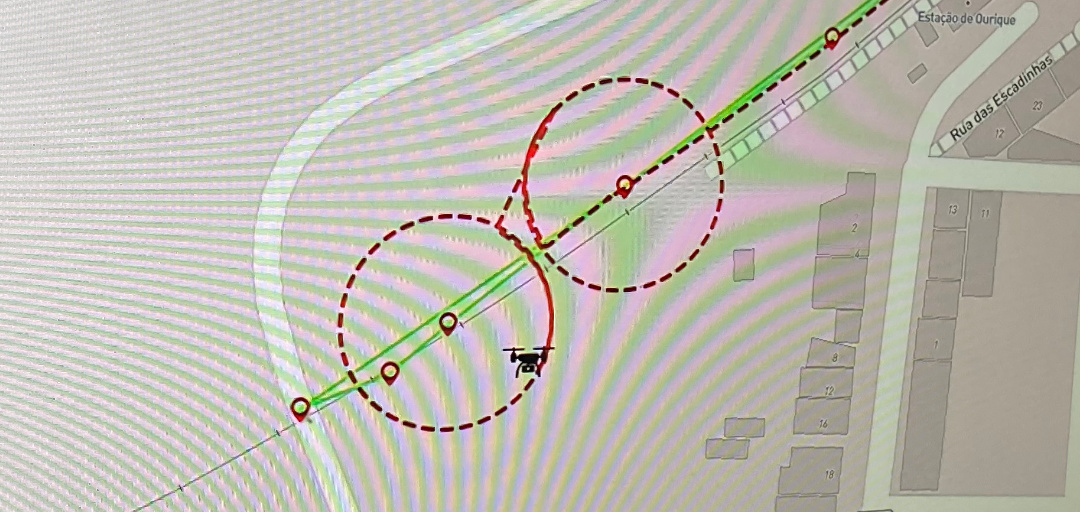Radius, the European project that is developing a technology to use drones to enhance the monitoring of critical railway safety signalling equipment, has brought its partners together to demonstrate its viability. The result has been very successful.

The flight tests gathered more than twenty experts in Ourique, in the Alentejo region, and took place in mid-July. The base was the Ourique railway station, on operative station with regular train traffic, allowing the technology to be tested in a real-world scenario.
The main objective was to demonstrate all the components of Radius worked together. Until now, different elements have been tested in the flights carried out by the project, but a demonstration of the complete solution is a significant step for the project.
In particular, the demonstration included the final version of the custom developed docking station, a key element of Radius because it allows the drone to take off, land, and charge the drone, thus increasing the range of the solution and making it viable commercially.

Activities performed
Two different flights were carried out during the demonstration:
- The first one, conducted in VLOS (Visual Line of Sight) conditions served to show the correct condition and functioning of three key elements for railway safety: switches, which are essential for controlling train traffic and direction; lineside cabinets, which play a crucial role in controlling signalling equipment at trackside, and level crossings, which regulate traffic and are vital to avoid collisions between trains and vehicles. During this test, the pilot kept the drone under visual sight, following the European Drone Regulations.

On the photograph above, you can see the VLOS flight planning section of the remote pilot station display. Note that the drone performed an orbit around the points of interest to capture images from all angles.
- The second one was conducted in BVLOS (Beyond Visual Line of Sight) conditions. The objective was similar to the previous one, but in this case the flight was outside the VLOS boundary. The objective was to demonstrate how a flight would be conducted with the drone out of the operator's sight to test the technology in all its aspects. In this case it was a simulation, because observers were always visually monitoring the drone to comply with current regulations. This test was also functionally a success because the process was carried out completely autonomously, without the need for intervention by the observers, that were only present for safety reasons.
In addition to the flights, the day included a presentation of the set objectives, the technical advances achieved, and the results obtained.
Technology details
The automatic analysis of the images collected during the missions uses Artificial Intelligence (AI) and machine learning algorithms, allowing the identification of defects and anomalies in selected assets, reducing the need for ground inspections, optimising equipment, and reducing the risk of accidents.
The demonstration flights were carried out with a drone from the IP fleet, specifically a DJI Matrice 300 RTK. This drone is equipped with a command-and-control system developed by the project. The remote-control unit, developed within the framework of the project, allows for more precise and efficient control, enabling the execution of predefined missions.

International partners shaping the project
Radius comprises partners from Portugal, Italy, and Spain: Hitachi, Zenabyte, EuroUSC Italia, EuroUSC España, Evoleo, and Infraestructuras de Portugal. The latter has played a central role as the organiser and host of the event. Therefore, executives and employees with relevant positions from this important Portuguese company attended to follow the tests first-hand.